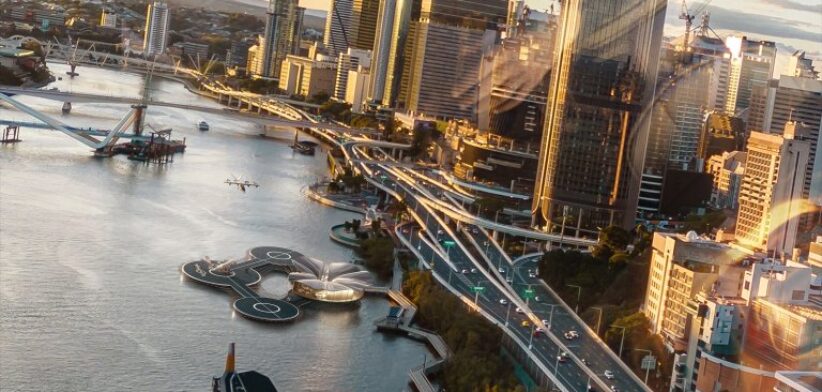A Gold Coast event showcasing the future of uncrewed air travel has seen a glimpse of what could be in store for Brisbane in the coming years.
Australian vertiport developer Skyportz released images of riverfront vertiport concepts for the Brisbane River at the annual Advanced Air Mobility Summit, which wraps up today.
Skyportz CEO Clem Newton-Brown said with the Olympic Games set to be hosted by Brisbane in 2032, and strong support from all levels of government to develop Advanced Air Mobility, the region was shaping up as an Australian launch market for air taxis.
“At Skyportz we believe that the lowest hanging fruit for retrofitting vertiports into urban areas are natural aviation corridors such as rivers,” Mr Newton-Brown said.
“While there are a small number of cities around the world that have developed rooftop helipads, they are not the easiest places to safely land aircraft. There are usually better options, particularly in waterfront cities”.
He said Skyportz has been working with former Australian Scientist of the Year Abdulghani Mohamed on wind and turbulence modelling in cities and trialling specific sites.
“We keep coming back to waterfront locations as being the safest and most logical place to install new vertiports in large cities when it comes to turbulence,” Mr Newton-Brown said.
In a presentation to the Summit, Mr Newton-Brown identified the following benefits of waterfront vertiports.
- Access to sites that are scarce in urban environments.
- Government leases rather than purchasing expensive land.
- Clear approach and departure paths above the water.
- Little chance of losing aviation corridors due to subsequent development.
- Less wind turbulence compared to central CBD.
- More predictable airflows.
The Australian air regulator, CASA, released vertiport guidelines, at the Summit, which organisers say signals a commitment to facilitate Advanced Air Mobility in Australia.
CASA defines Advanced air mobility (AAM) as a developing form of aviation. A range of innovative technologies will enable AAM operations, including new aircraft designs, initially crewed and expected to transition to uncrewed, that transport passengers and larger freight.








